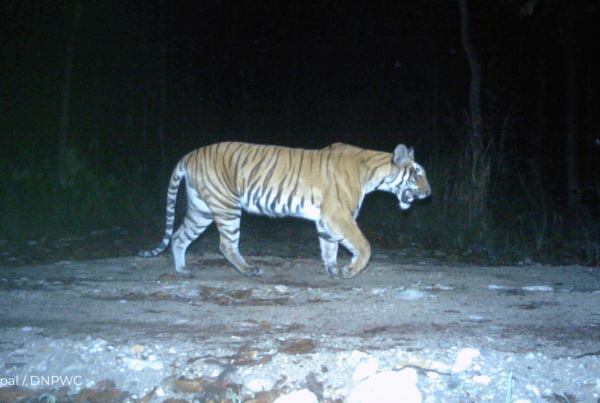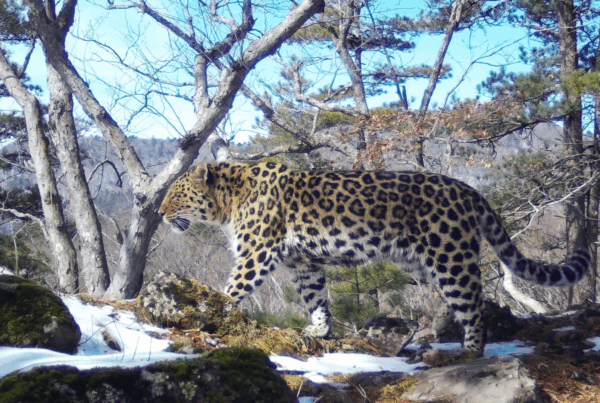Nepal’s remarkable success in nearly tripling its wild tiger population has become a global conservation milestone. But, with rising numbers comes a new challenge: ensuring people and predators can coexist safely.
Written by: Sunjeep Pun / Senior Programme Officer ZSL Nepal
Tiger numbers declined almost 95% over the past century due to habitat loss, poaching, illegal trade, prey depletion, and climate change. In 2010, 13 tiger range countries pledged to double wild tiger numbers by 2022. While not all succeeded, Nepal not only met this target, it surpassed it, nearly tripling its tiger population from 121 in 2009 to 355 in 2022.
Rising Human-wildlife Conflict
With rising numbers, new conservation challenges have emerged. More tigers are now seen near human settlements, sometimes attacking livestock or, in rare cases, people, risking potential retaliatory killings. Parsa National Park (PNP), one of five tiger habitats in Nepal, saw tiger numbers grow from 4 in 2009 to 41 in 2022. However, this success has brought increased human-tiger conflict, including a recent human fatality. Having successfully grown the population, conservationists and government bodies share the responsibility of ensuring the safety of people living around the park. This has become a key area of work, with efforts focused on protecting both communities and tigers.
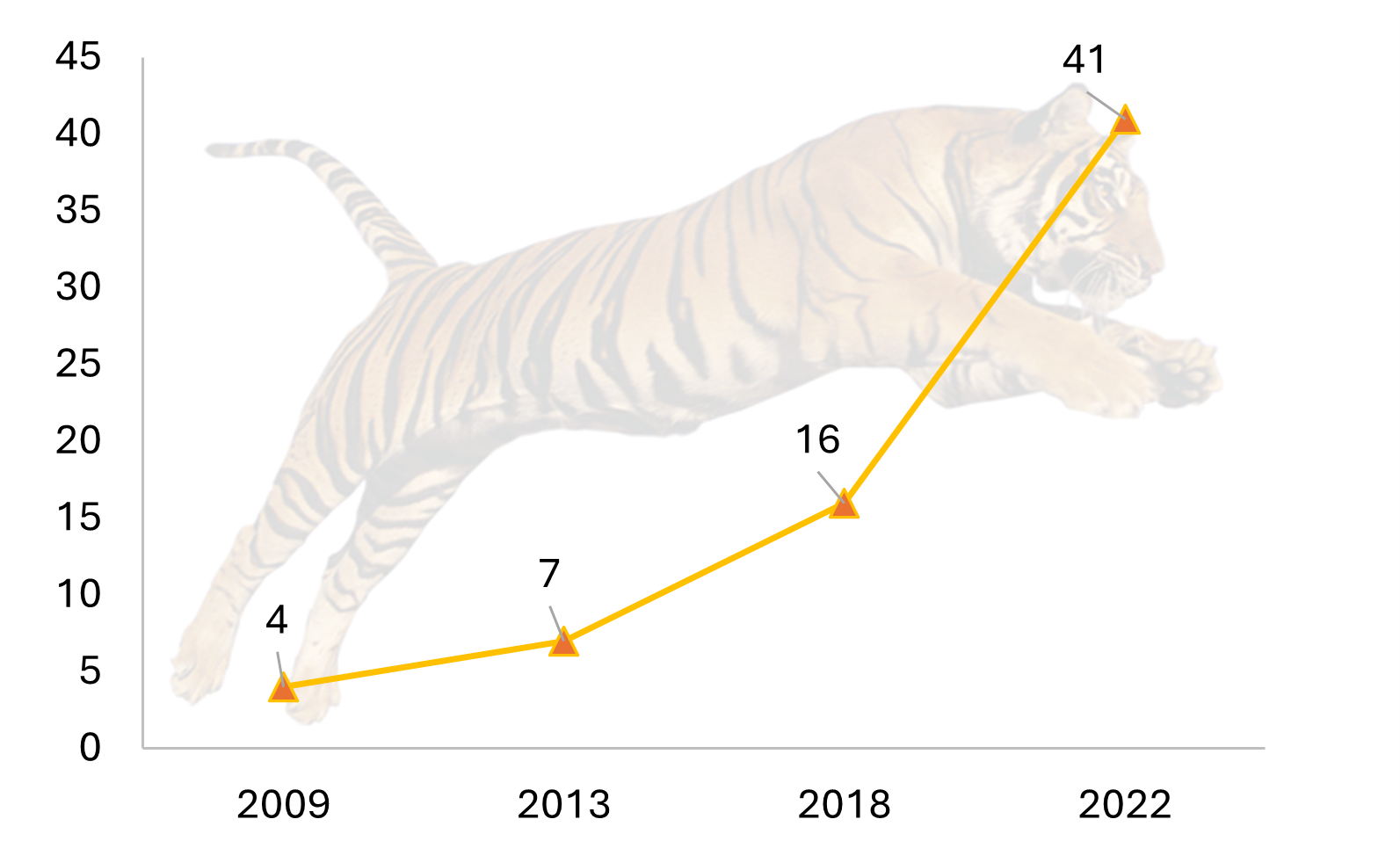
Trend of tiger population in PNP and adjoining forest from 2009 to 2022
Solutions in Nepal
Parsa National Park, and the Divisional Forest Office, with support from ZSL Nepal and other partners, have launched the Bagh Mitra (“Friends of Tiger”) initiative, endorsed by the provincial ministry on Global Tiger Day in 2024. Locals interested in conservation are trained to raise awareness in their communities on how to avoid human-tiger conflict. The programme both promotes coexistence and builds a more inclusive conservation model by actively involving local people.
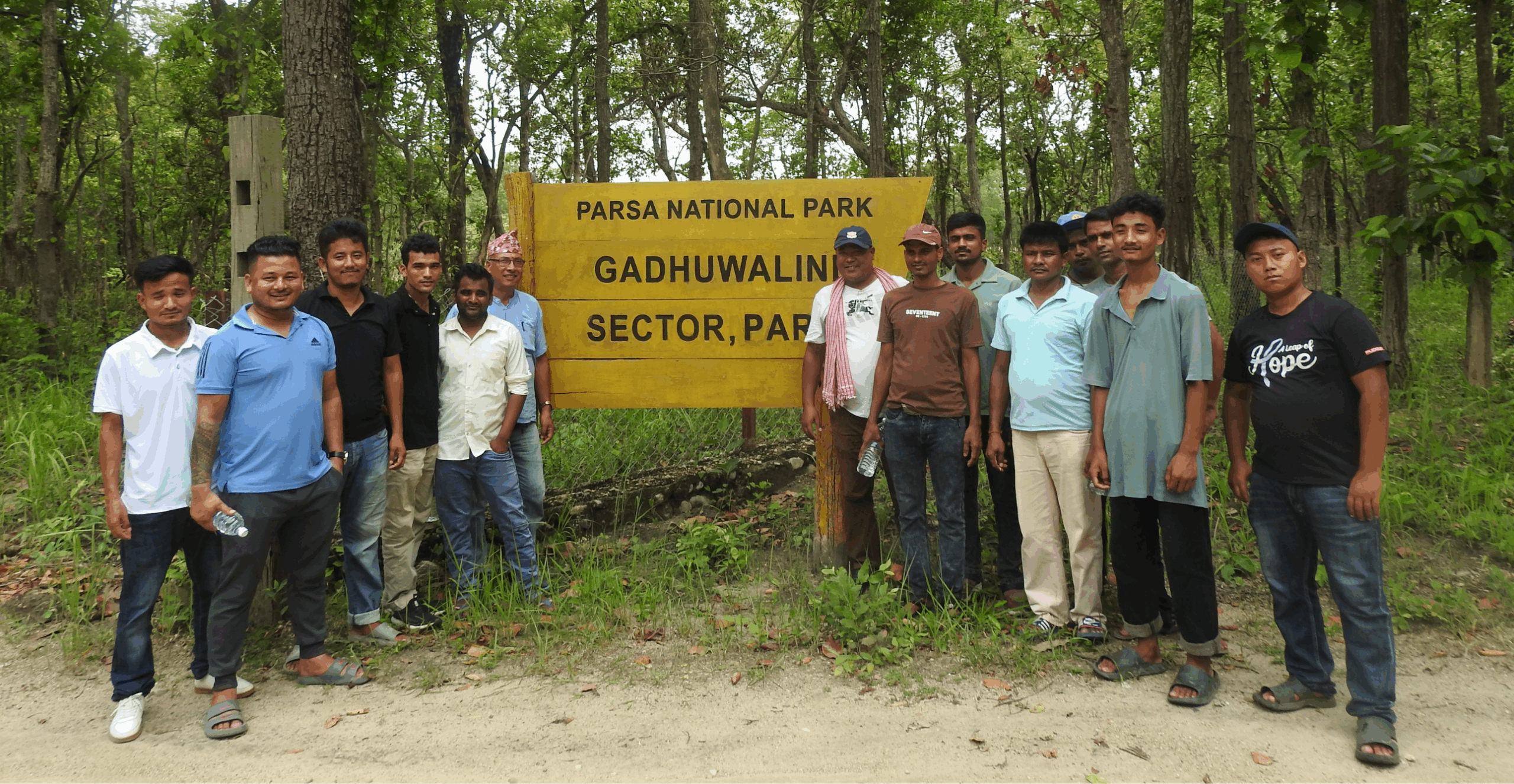
Bagh Mitra group photo after field demonstration
Bagh Mitra (“Friends of Tiger”)
With funding from WildCats Conservation Alliance, ZSL Nepal is implementing the initiative in the southern belt of PNP and nearby forests under the project Promoting Human-Tiger Coexistence in Parsa National Park. ZSL held coordination meetings with national, site, and community-level stakeholders to launch the programme. Following this, 15 individuals were selected as Bagh Mitra. They received materials and participated in a two-day training in May 2025, covering tiger ecology, conflict avoidance, rescue protocols, and communication standards. Sessions were led by PNP and ZSL staff, with a field visit to identify wildlife signs.
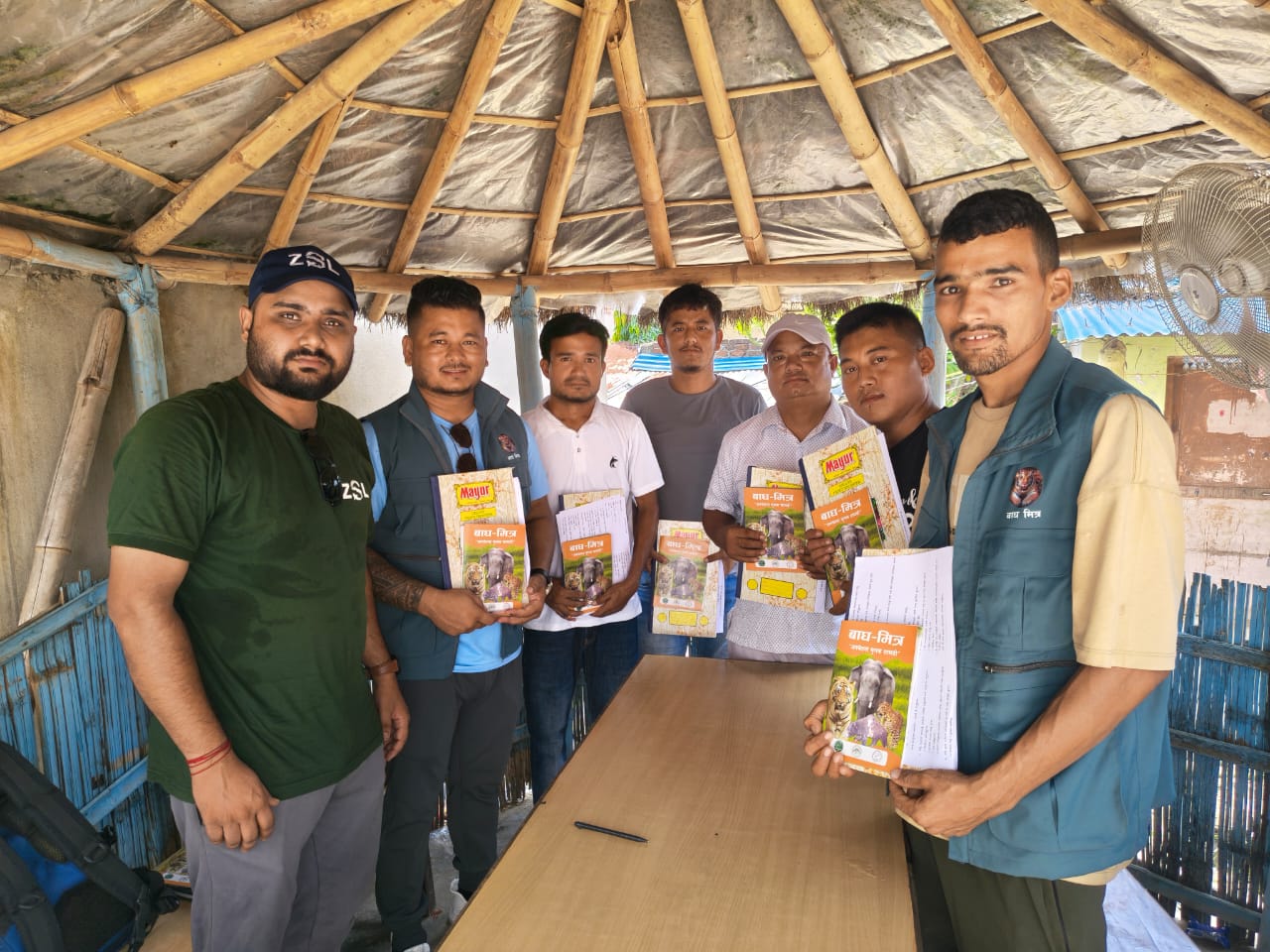
Awareness delivery material distribution to Bagh Mitra.
Those trained now lead awareness campaigns targeting school students and forest-dependent communities. They also report human-wildlife conflict incidents, support others in filing wildlife damage claims, share legal information, and strengthen links between local people and conservation authorities by ensuring clear, credible communication.
Impact of Bagh Mitra
Since the launch of Bagh Mitra, trained individuals have delivered awareness sessions in schools and communities on avoiding human-wildlife conflict. These include practical tips on wildlife behaviour, warning signs, and response strategies, using role-play and interactive methods. Six Bagh Mitra have so far led nine sessions, reaching 23 students, 9 teachers, and 94 community members aged 15 to 70. The programme aims to reach 600 people by 2026 and targets both young people, key to long-term change, and older residents, who hold traditional knowledge but are more vulnerable to wildlife encounters.
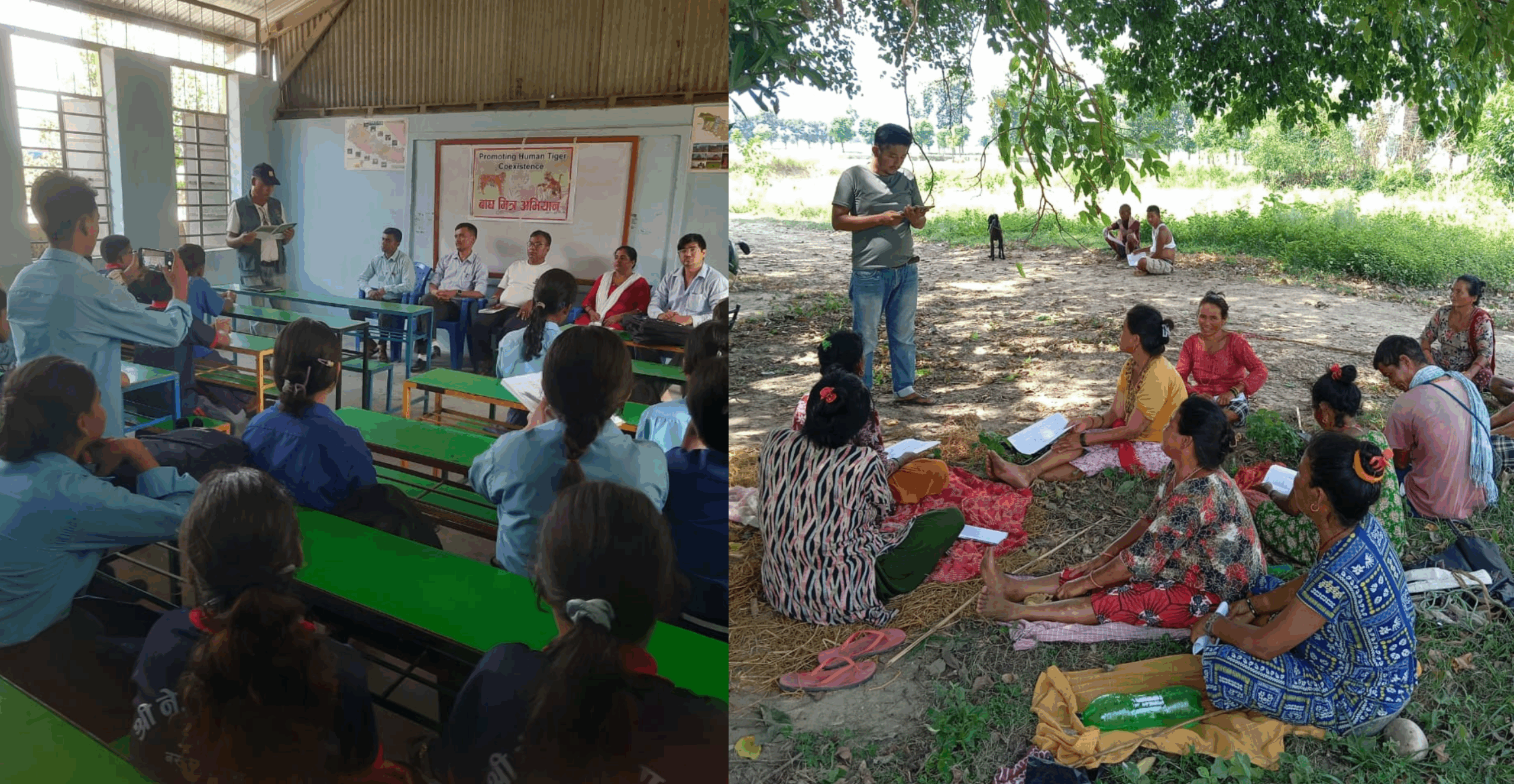
Bagh Mitra Mr Dilli Bahadur Thapa conducting school awareness left). Bagh Mitra Karan Shrestha conducting community awareness (right).


